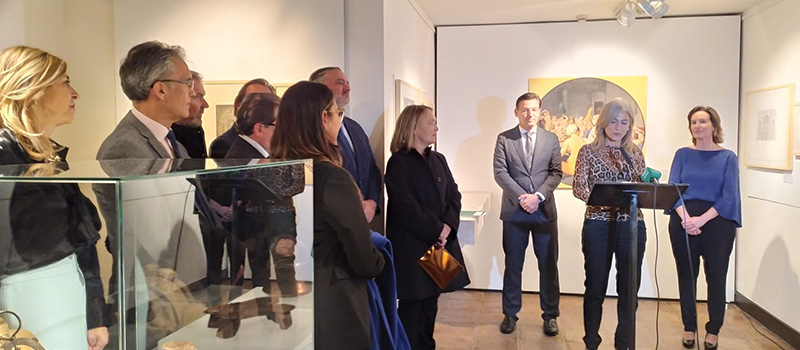El legado andalusi Foundation offers an opportunity to explore the history of the baths of al-Andalus in this exhibition presented at Casa de los Tiros.
The exhibition was inaugurated on December 4 by the Minister of Culture and Historical Heritage of the Andalusian Government, Mrs. Patricia del Pozo, who showed her complete support for this Andalusian cultural institution, so she thanked the director of the Foundation, Mrs. Concha de Santa Ana and her team for the new stage El legado andalusí begins, offering an extensive program of activities. The event was also attended by the Mayor of Granada, Mr. Luis Salvador and a good number of representatives from Granada’s academic and cultural world.
The exhibition brings the visitor closer to the history of the Arab baths or hamman; the most popular and common buildings in everyday life of the cities of al-Andalus. Wherever a new settlement or urban center was established, the first construction erected was a hamman. Such was their role in everyday life, that the importance of cities was measured by the number of hamman they had. This is the case of Córdoba during the Caliphate that, according to the chronicles had about 300 of them in the 10th century. They were frequently built next to the main roads, city gates and mosques. Its use was so widespread that they remained functioning until the 16th century, and were included in architectural complexes in the Christian era.
For Muslims, the conjunction of religion and hygiene produces the proliferation of public baths, and this important historical heritage is present in towns and cities that have deserved an interesting tour in this exhibition. It is a great opportunity to explore their history through current photographs that show the magnificent state of conservation of many of them. Likewise, the exhibition recreates their existence as seen by artists -mainly Romantic and Orientalists- in old engravings that captured the atmosphere of these spaces, understood as places for the delight of body and soul, and a particular way of relating with other people and understanding daily life.
It is said that the laws of the hammanare the total purification of the body, from which the user seeks to extract all sadness because it is harmful, and to exercise pleasure, which is revitalizing instead. However, it also played an important role in contributing to maintain social and therapeutic values, no doubt reminiscent of a classical inheritance.
The architecture of the hammams in al-Andalus is scattered throughout the Andalusian territory and has aroused new interest in recent decades. There are already many towns and cities that have undertaken their restoration to allow public visit. This exhibition introduces an interesting inventory that includes the most popular hamman, as well as those unknown to the general public, an added tourist attraction for many Spanish towns and cities.
Museum Casa de los Tiros
C/ Pavaneras, 19. Granada
5 December 2019 – 1 March, 2020
Morning: Tuesday- Saturday 11 a. m – 2 p. m.; evenings: 6.30 – 8. 30 p. m.
Sundays and public holidays: 11 a. m. – 2 p.m.
Closed: Mondays; 24, 25 and 31 December; 1 and 6 January.


